Ambassador Peter Tan: How Lee Kuan Yew and Deng Xiaoping shaped Singapore–China ties
A small gesture between Lee Kuan Yew and Deng Xiaoping still shapes Singapore–China ties 35 years on. Lianhe Zaobao correspondent Sim Tze Wei speaks with Singapore’s Ambassador to the People’s Republic of China, Peter Tan, about diplomacy, respect and life beyond protocol.
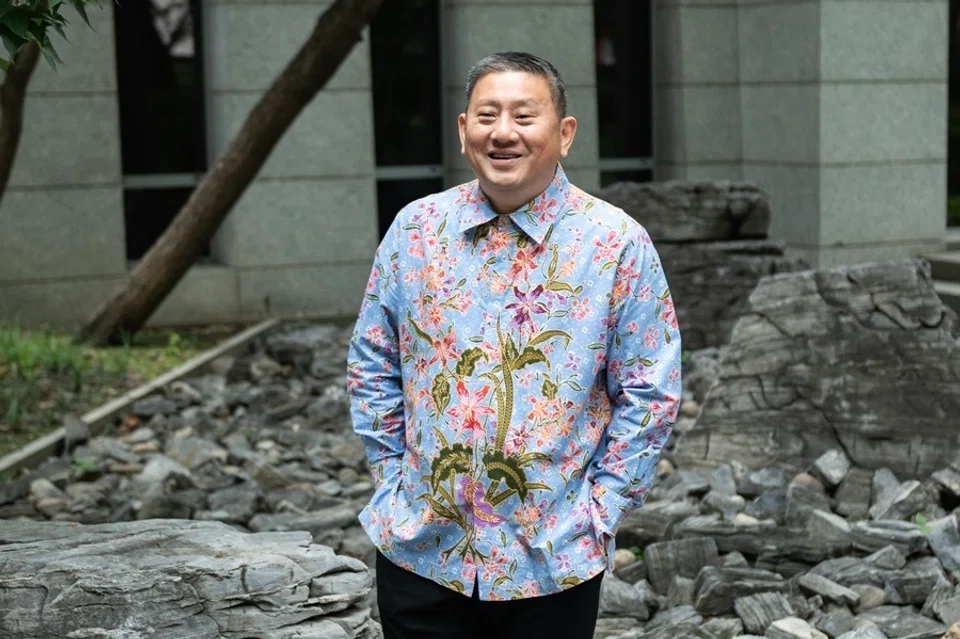
It is no exaggeration to say that Singapore’s ambassador to China, Peter Tan, wears batik like a second skin.
When trying to find the ambassador at public events, one cannot go wrong looking out for a gentleman wearing batik. When Tan was interviewed by Lianhe Zaobao at the Singapore Embassy in Beijing in mid-September, he appeared in his signature batik attire.
Batik is a printed fabric made using wax-resist dyeing; it also refers to the garments made from such fabric. It has a distinct Southeast Asian cultural flavour, and is also one of the traditional Peranakan garments. Batik is highly versatile; it can be worn as casual wear or as formal attire suitable for grand occasions, easily rivalling a suit.
Every posting is unique
Tan, 58, is a Peranakan. His father grew up in Geylang Kampong, Singapore, while Tan himself spent his early years in Queenstown — Singapore’s first HDB estate — before moving to Tampines in the east. A graduate of the National University of Singapore, he joined the Ministry of Foreign Affairs in 1992 and has devoted the past 33 years to a distinguished career in diplomacy.
Before his posting to China in May 2023, Tan served as Singapore’s Ambassador to the Republic of Korea and later as Ambassador to Japan.
During the interview, he spoke eloquently in Mandarin for nearly 90 minutes, sharing his hopes for Singapore–China relations, observations on his posting as well as insights into diplomatic work, including his reflections on people-to-people diplomacy, such as through food, songs and clothes.
Tan said that every posting is unique, with its own charm and challenges, and he has encountered many pleasant surprises since being posted to China two and a half years ago.
While strolling in Ritan Park, he happily danced along after being invited by some middle-aged women to join in their square dancing.
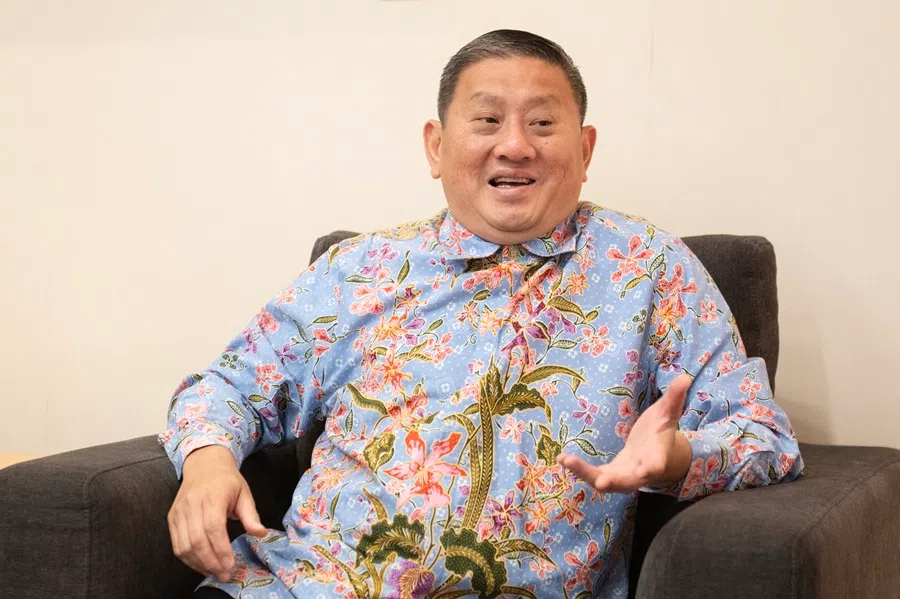
He first praised China’s technology and mobile applications, such as electronic payments, online shopping and livestreaming, for bringing great convenience to daily life.
Outside of official duties, he enjoys riding shared bicycles through Beijing’s streets and alleys. One moment, he is meandering through towering skyscrapers; the next, he is in a hutong (networks of ancient alleys and homes), among traditional shops selling old Beijing delicacies like douzhi (豆汁儿, fermented mung bean juice) and dalumian (打卤面, noodles with gravy). This wondrous coexistence of modernity and tradition is deeply fascinating to Tan.
In his free time, Tan likes to interact with Beijing locals. While strolling in Ritan Park, he happily danced along after being invited by some middle-aged women to join in their square dancing. He also loves buying food ingredients at wet markets and getting chummy with the stallholders. And because Chinese friends told him that Beijing is not representative of the whole of China, he actively travels across the country.
Tan described China as being “like an onion; you have to peel it layer by layer to truly understand it, and each layer brings a different feeling.”
National interest at the core
Whether an onion, kimchi or sushi, for Tan, a professional diplomat’s duty is the same no matter where they are posted: to act with national interest at the core, upholding the principles of safeguarding Singapore’s sovereign independence and territorial integrity.
People who settle down in Singapore and become citizens no longer see themselves as “falling leaves returning to their roots” (落叶归根) someday, but instead choose to “put out roots” (落地生根) in Singapore. — Ambassador Peter Tan
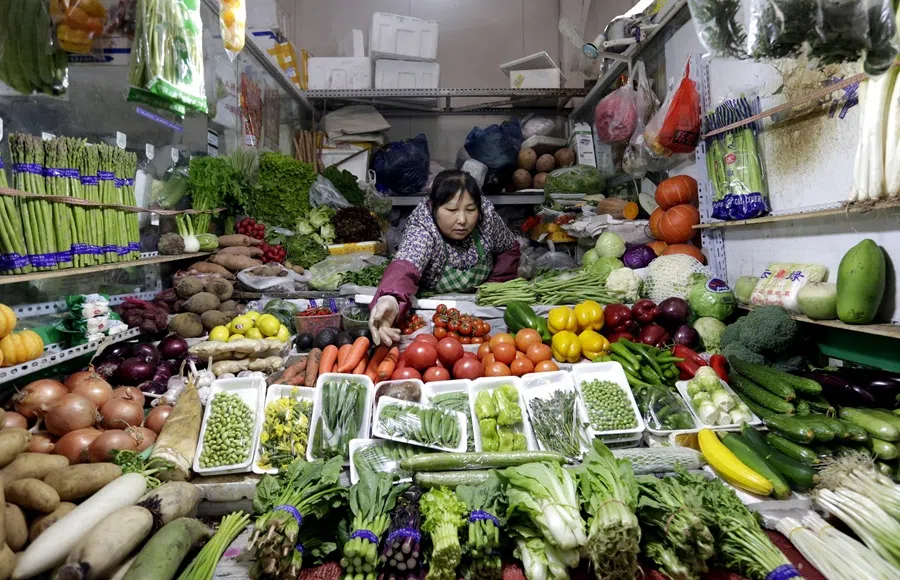
Tan said one of the most frequently asked questions in China is: “why do Singaporeans, whose population is mainly Chinese and who share similar appearances and language with the mainland Chinese, have different ways of thinking?”
Tan explains to his Chinese friends that Singapore is a multiracial, multi-religious and multicultural independent nation. People who settle down in Singapore and become citizens no longer see themselves as “falling leaves returning to their roots” (落叶归根) someday, but instead choose to “put out roots” (落地生根) in Singapore.
He said thoughtfully, “This is something the Chinese need to understand. Without it, they cannot fully comprehend Singapore. Once they do, our position will become clear to them.”
Lee Kuan Yew and Deng Xiaoping
This year marks 35 years of diplomatic relations between Singapore and China, but the story of their ties began well before 1990. Tan pointed out that even before formal diplomatic relations were established in 1990, a special relationship already existed between Singapore and China, led by their respective leaders, Lee Kuan Yew and Deng Xiaoping.
In 1976, Lee made his first visit to China; in 1978, Deng visited Singapore. In June 1980, the two countries signed an agreement to establish reciprocal commercial trade representative offices in Singapore and Beijing.
Tan emphasised: “When discussing Singapore–China relations, one cannot help but talk about these two great figures, Lee Kuan Yew and Deng Xiaoping.” He recounted a deeply inspirational anecdote which reflected the essence of Singapore–China relations through the way the two leaders interacted — mutual understanding and respect.
In 1978, when Deng visited Singapore, Lee specially prepared ashtrays and spittoons for his guest at the Istana (Singapore’s presidential palace). Lee knew Deng smoked, and during his visit to China two years prior, he noticed spittoons placed in the Great Hall of the People. As it turned out, the ashtrays and the spittoons at the Istana were not needed, because Deng knew Lee was sensitive to cigarette smoke, and he did not smoke at all during their meeting.
“From a small story, you can see the core of their relationship and also the essence of bilateral relations; that is, mutual understanding and respect.” — Tan

Tan said: “What both men did was profoundly significant. From a small story, you can see the core of their relationship and also the essence of bilateral relations; that is, mutual understanding and respect.”
Tan noted that the friendly relationship between the leaders not only laid a solid foundation for Singapore–China relations, it also allowed the two countries to gradually establish multiple institutionalised interaction platforms, as well as embark on numerous cooperation projects.
Fruits of cooperation
Over the past 35 years, Singapore–China cooperation has yielded remarkable results. In addition to establishing the Joint Council for Bilateral Cooperation — the highest-level annual forum between both countries — Singapore has also set up bilateral business and economic councils with eight Chinese provinces and cities.
The two countries have also launched three intergovernmental projects: the Suzhou Industrial Park, the Tianjin Eco-City, and the Chongqing Connectivity Initiative; at the national level, there is also the Guangzhou Knowledge City. For the past 12 years, Singapore has been China’s largest source of foreign investment, while China has remained Singapore’s largest trading partner.
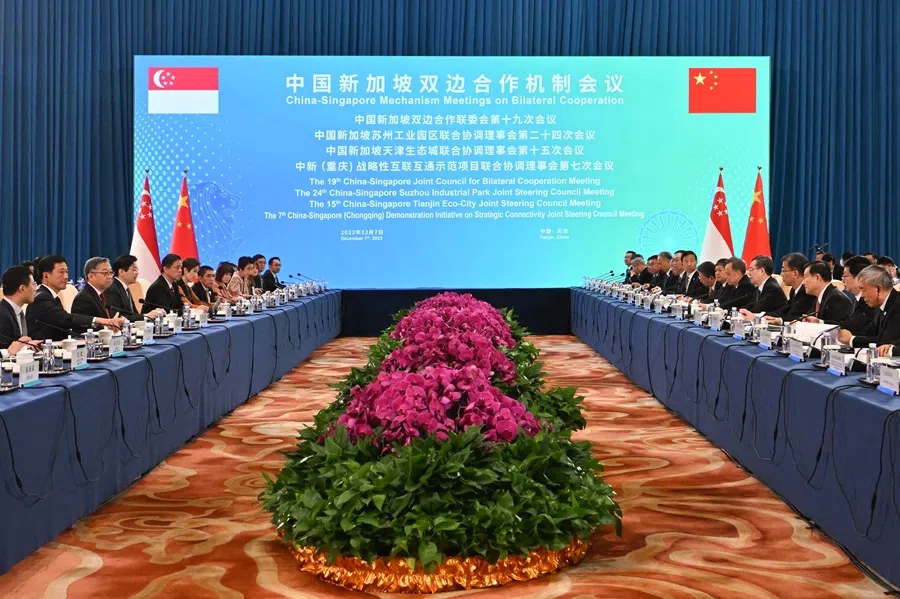
In 2023, Singapore–China relations were upgraded to an “All-Round High-Quality Future-Oriented Partnership”. After Singapore’s new government took office in May this year, Prime Minister Lawrence Wong paid an official visit to China in June, where he met with Chinese President Xi Jinping to further strengthen bilateral ties.
Singapore’s ability to collaborate with multiple countries over the past 60 years stems from being a reliable and principled partner. — Tan
Singapore’s stance
Over the past 35 years, China experienced tremendous changes amid a turbulent international landscape. From Lee Kuan Yew to Goh Chok Tong, and from Lee Hsien Loong passing the baton to Lawrence Wong, what has changed and what has remained constant in Singapore–China relations across four generations of Singaporean leaders?
Without hesitation, Tan said that what remains unchanged are Singapore’s stance and principles, with China regarded as a key partner in its foreign policy.
He stressed that disagreements are inevitable in any bilateral relationship; what matters most is seeking common ground while reserving differences, and fostering mutual trust and respect. He said, “True friendship between two countries does not mean agreeing on everything — that is impossible. It means engaging in honest dialogue, acting with goodwill, respecting differences, and deepening understanding in the process to achieve healthy development.”
Amid intensifying great power rivalry and an increasingly complex geopolitical landscape, Tan emphasised that Singapore has stood firm on not choosing sides — “if we must take sides, we will only side with Singapore’s interests”. He said that Singapore’s ability to collaborate with multiple countries over the past 60 years stems from being a reliable and principled partner.
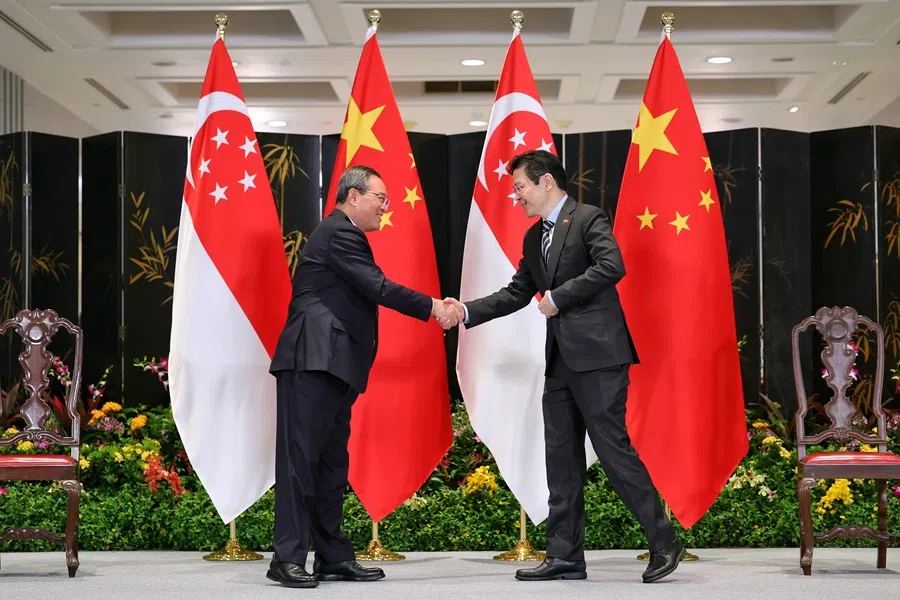
Looking ahead, how does Singapore plan to further deepen its partnership with China? Will a fourth intergovernmental project be launched?
Tan thinks that rather than focusing on a fourth project, the priority should be on expanding and deepening cooperation within the three existing projects, and identifying new opportunities in line with contemporary needs, such as in high technology, digitalisation, the green economy and healthcare.
He noted, “Singapore–China cooperation has never stood still. The three intergovernmental projects are not finished products, but living partnerships that continue to be refined, upgraded, and taken to new levels.”
Bringing a taste of Singapore to China
One of the first things that strikes the local Singapore community in China about the ambassador is his love for singing and cooking.
At events hosted by the Singapore Embassy or business associations, Tan often sings on stage, sometimes even adapting the lyrics himself to include Singaporean elements. He also invites Singaporean media to his official residence to enjoy Nanyang cuisine he personally cooked.
Chen has appeared on Beijing Radio and Television Station’s The Ambassador‘s Treasure Dinner (《大使的宝藏家宴》), cooking signature Singaporean dishes, and has also participated in Hainan Television’s Ambassador’s Dinner Party (大使家宴》).
Whether attending events in a batik shirt or choosing the menu and song list, Tan only has one consideration: to convey an important message that Singapore is a multiracial, multicultural and multireligious society.
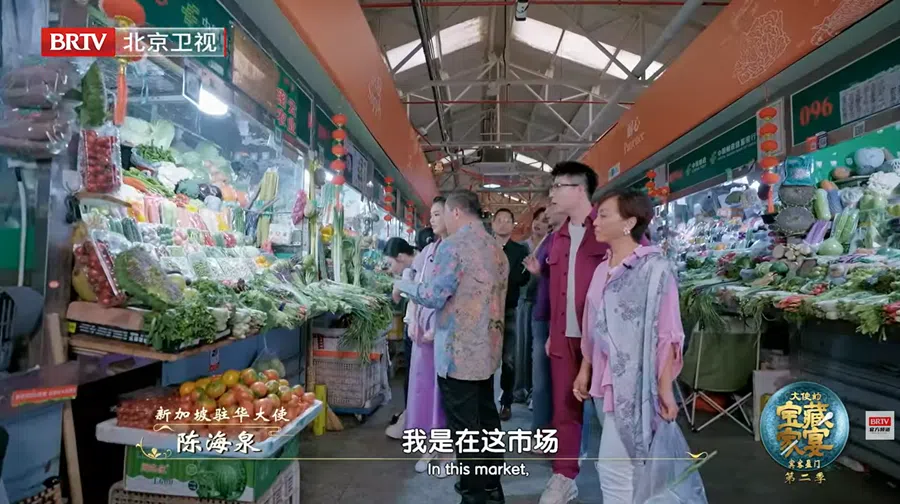
While his performances on stage and in front of the camera may appear light-hearted and cheerful, the man behind them actually carries a weighty diplomatic mission — advancing people-to-people diplomacy.
Tan thinks that people-to-people diplomacy is indispensable. “Without a bond of mutual understanding between our peoples, it would be very difficult to take bilateral relations to the next level,” he said.
Whether attending events in a batik shirt or choosing the menu and song list, Tan only has one consideration: to convey an important message that Singapore is a multiracial, multicultural and multireligious society.
I asked Tan to pick a dish that best embodies the long-standing friendship between Singapore and China, and he immediately picked curry chicken served with shou zhua bing (手抓饼, crispy pull-apart pancakes), enthusiastically explaining its significance.
“Curry brings together Indian spices, Malay spices, Malay cooking styles, and Nyonya methods — it’s truly multicultural. You can make it with chicken, lamb or beef; the Chinese often use pork. In Singapore, we usually serve it with roti prata. In China, I use shou zhua bing. A Singaporean multicultural curry paired with a Chinese pancake — now that’s a true Singapore–China fusion dish,” he explained.

Tan is able to speak several dialects, and during events celebrating the 60th year of Singapore’s independence organised by Singaporean business chambers across China, he chose different songs to perform in each city.
In Xiamen, he sang the Hokkien song Ai Pia Cia Eh Yia (To Win, You Have to Fight), reflecting the perseverance of early migrants to Southeast Asia and symbolising Singaporeans’ hard work over the past 60 years. In Guangzhou, he chose Hong Kong singer Alan Tam’s Cantonese classic Friends; and in Beijing, he performed Emil Chau’s Mandarin song Friends.
He said with a smile, “This year marks the 35th anniversary of diplomatic ties between Singapore and China. Friends — that word perfectly represents the friendship between our two countries.”
This article was first published in Lianhe Zaobao as “我国驻华大使陈海泉:李光耀邓小平相处之道折射新中关系本质”.

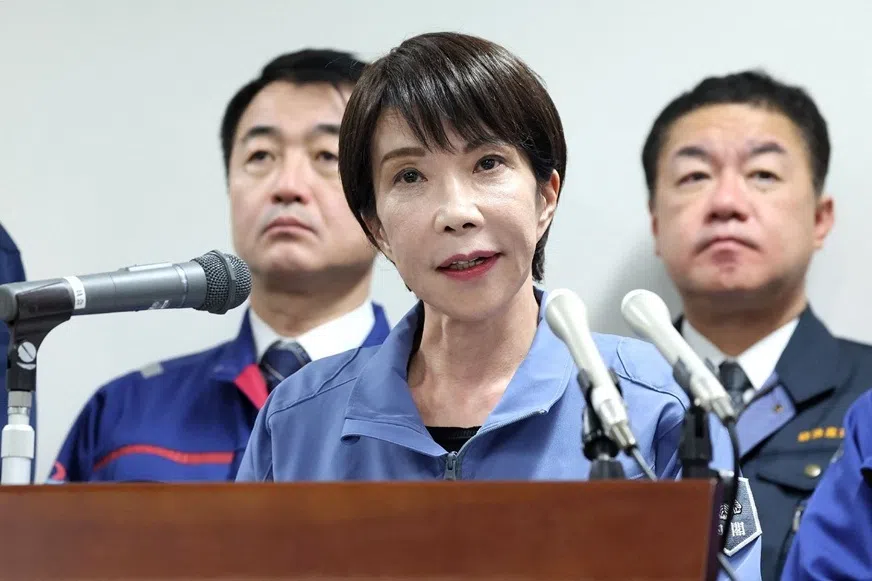

![[Big read] Love is hard to find for millions of rural Chinese men](https://cassette.sphdigital.com.sg/image/thinkchina/16fb62fbcf055b710e38d7679f82264ad682ce8b45542008afeb14d369a94399)
![[Big read] China’s 10 trillion RMB debt clean-up falls short](https://cassette.sphdigital.com.sg/image/thinkchina/d08cfc72b13782693c25f2fcbf886fa7673723efca260881e7086211b082e66c)
